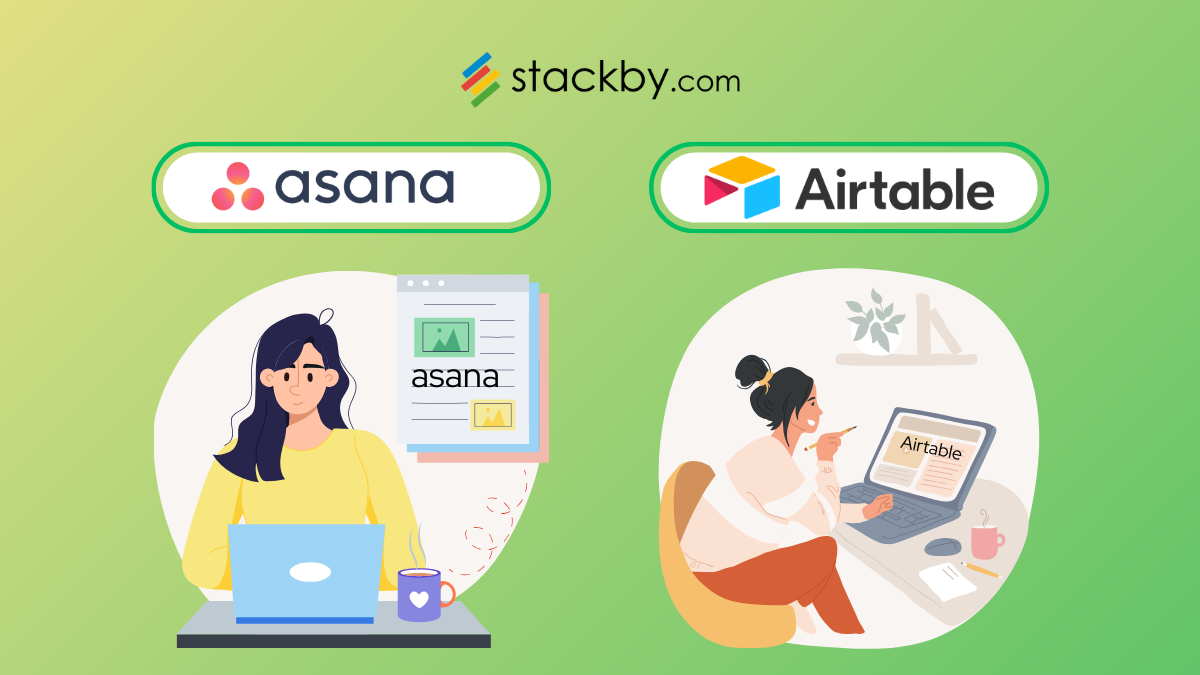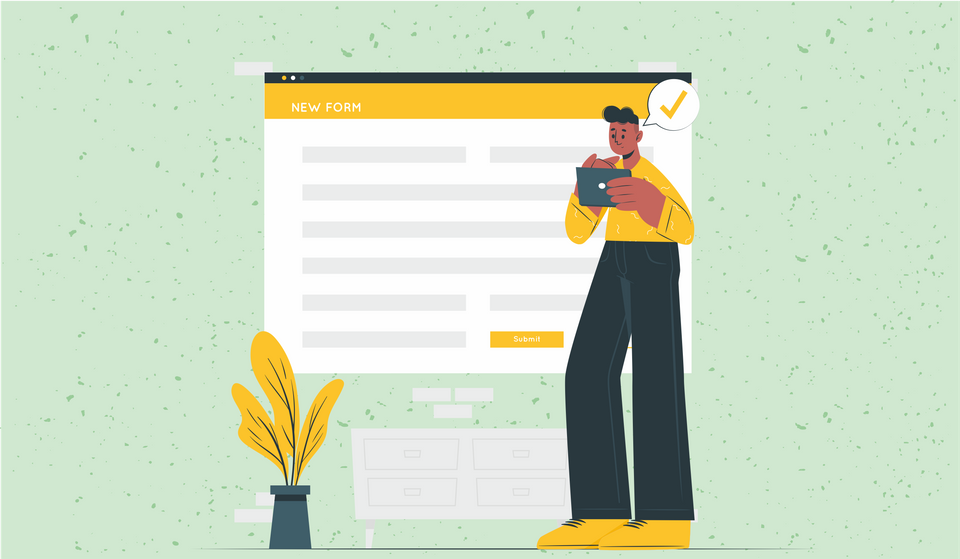Asana vs Airtable : Which is right for your business?
Struggling to choose between Asana and Airtable? This guide breaks down their differences, features, use cases, and pricing—plus an all-in-one alternative.

Feeling stuck between too many tools and not getting things done?
Managing a business alone is tough. Now add scattered tools, missed deadlines, and unorganized data into the mix. It seems to grow beyond bounds, doesn't it?
Sounds quite familiar, right?
So, you're juggling project deadlines in one tool while customer data is sitting in a spreadsheet somewhere else. Your team's constantly switching tabs, updating statuses manually, and still—something always falls through the cracks.
What if you could simplify your workflow, boost your team’s productivity, and manage everything from projects to data without juggling multiple tools?

This is where productivity tools such as Asana and Airtable fit in. However, if you're ever asking, "Should I choose Asana or Airtable?"—you're asking the right question.
They may seem to serve the same or similar purposes at a glance, but they serve very different purposes.
This is the detailed guide, we’ll help you with a clear understanding of the real difference between Asana vs Airtable, comparison of features and pricing, their best use cases, and then there is an alternative—Stackby, a tool that captures the best of both worlds together.
Let's decode it all.
What is Asana?
Asana is a project and task management platform built for teams that thrive on structure, deadlines, and collaboration. It's like a virtual command center that shows you how tasks are organized on time, tracks their progress, and communicates all in one place.
From managing product launches to onboarding new clients or marketing a remote team, Asana helps you break those projects into actionable steps.
Key Features
- Task assignments and due dates
- Task lists, Kanban boards, and timelines
- Project tracking and workload views
- Rules, automation, and dependencies
- Integration with 200+ apps (Slack, Google Drive, etc.)
What is Airtable?
Airtable is a cloud-based collaboration tool that looks like a spreadsheet while working like a super-flexible database. So, it ends up being quite exceptional at workflow customization and handling structured information in a very visual and flexible way.
Perfect for the team that has to track a lot of data, whether it is content calendars or inventory or even CRM or product development - Airtable makes it possible to do all of that and more; it would be enjoyable even.
Features:
- Spreadsheet-database hybrid with rich field types.
- Views: Grid, Calendar, Kanban, Gallery.
- Linked Records, filters, and conditional logic.
- Automations, scripting, and integrations.
- Easy to customize for any workflow.
Airtable and Asana Use Cases:
Now, these are the examples by which it divides the whole picture easily.
Applications of Asana
Asana is involved with highly task-centric teams and organizations. Here is how real teams have been using it:
- Marketing Teams: Run and track marketing campaigns, launch calendars, email schedules
- Product Teams: Product Sprints planning, assigning engineering tasks, tracking product launches
- HR Teams: Onboarding, performance reviews, and employee engagement tasks
- Agencies & Freelancers: Project timeline creation, deliverables assignment, and client work tracking
- Remote Teams: Centralized all team communications and project progress updates.
If your work revolves around “what needs to get done, by whom, and by when,” Asana is your tool.
Use Cases for Airtable
Airtable is where complex data gets pragmatic configurability. Think of it as your internal lightweight tool-building platform without the code.
Content teams: Manage a content calendar, track the status of blogs, and collaborate with writers
Sales & CRM: Custom CRMs for managing leads, clients' deals, info, and follow-ups
Operations Teams: Track vendors, inventory, logistics, and procurement workflows
Event Planners: Guest list management, vendor contacts, budgets, time schedules
Startups: Product feature databases, competitor tracking, OKR dashboards
Creative Agencies: Visual asset libraries, client briefs, and delivery timelines
If your work is related to organizing data, viewing different angles of it, and building a workflow around it, Airtable is your most accurate choice.
Feature Comparison Table: Asana vs Airtable
Pricing Comparison: Asana vs Airtable
Note: The more your data needs increase, the more expensive you'll find Airtable. Asana offers more project management features as a lesser entry into the door.
As an example, here are the latest comments for comparison purposes:
- Asana: Best for Task Management
If your team succeeds on tasks, deadlines, and teamwork, Asana makes a lot of things easier.
It assigns, tracks, and collaborates all with full visibility and hardly any confusion. Its clean interface, mobile app, and integrations make it a favorite for fast-paced teams.
- Airtable: Best Centralizing Data
Airtable is the thing to use for those teams that want to throw away a spreadsheet and create something smarter. You shall create relational databases, connect records across tables, and build great-looking dashboards without any coding.
This definition is perfect for a workflow that is data-first rather than rigid lists of tasks.
How Stackby Helps You Manage Both Tasks + Data
What if we told you... You don’t have to choose.
Stackby is an incredible no-code platform where task management + data organization combine in one single tool. Kind of like being the best of both worlds in Airtable's flexibility and Asana's task clarity.
Here's what you get with Stackby:
Task + Data Unified in One Place
Just create rows for your tasks the same way that you do in spreadsheets
- Just create rows for your tasks the same way that you do in spreadsheets
- Add columns of priority deadlines, assignees, and other
- Add checkboxes, dropdowns, attachments, and links to other rows
- Add team members and track progress
Views that Fit Your Workflow
- Grid view for management of data
- Kanban view for task pipelines
- Calendar view for planning
- Gallery view for creativity
- Form view for data collection
Automations & API Connectors
- Real-time data from over 40+ services (YouTube, Google Analytics, Mailchimp, etc.)
- Set workflows and alerts with automation
- Connect with Slack, Google Workspace, or your favorite tools
Customizable for Any Team
From sales and marketing to HR and operations, Stackby gives you the flexibility to build what you need without relying on developers.
It can be your spreadsheet, your task board, your CRM, and your automation hub-all rolled into one.
Conclusion: Which One Should You Choose?
So, to cut it short one last time:
Choose Asana if your team's working mainly on task and project execution, collaboration, and deadline tracking. Simple, fast, and immensely delivers teamwork.
Choose Airtable if your work revolves around structured data, content, or operations in which customization and database power mean more than it does to traditional task lists.
Pro tip: Go for both! Many teams use Airtable for data + Asana for tasks. Or explore Stackby to unify your data and tasks under one roof.
Choosing the right tool will depend on your team size, workflow complexity, and type of work you are managing.
Still can’t decide?
Ask yourself:
- Do I need a to-do list for teams? → Go with Asana
- Do I need a smart spreadsheet that can scale into a database? → Go with Airtable
- Want both without paying double? → Check out Stackby
For other queries or assistance in building your workflow, drop us a comment!



![13 Best Business Management Software for your Work [2026]](/blog/content/images/size/w960/2024/03/stackby-business-blog-image-1.jpg)
